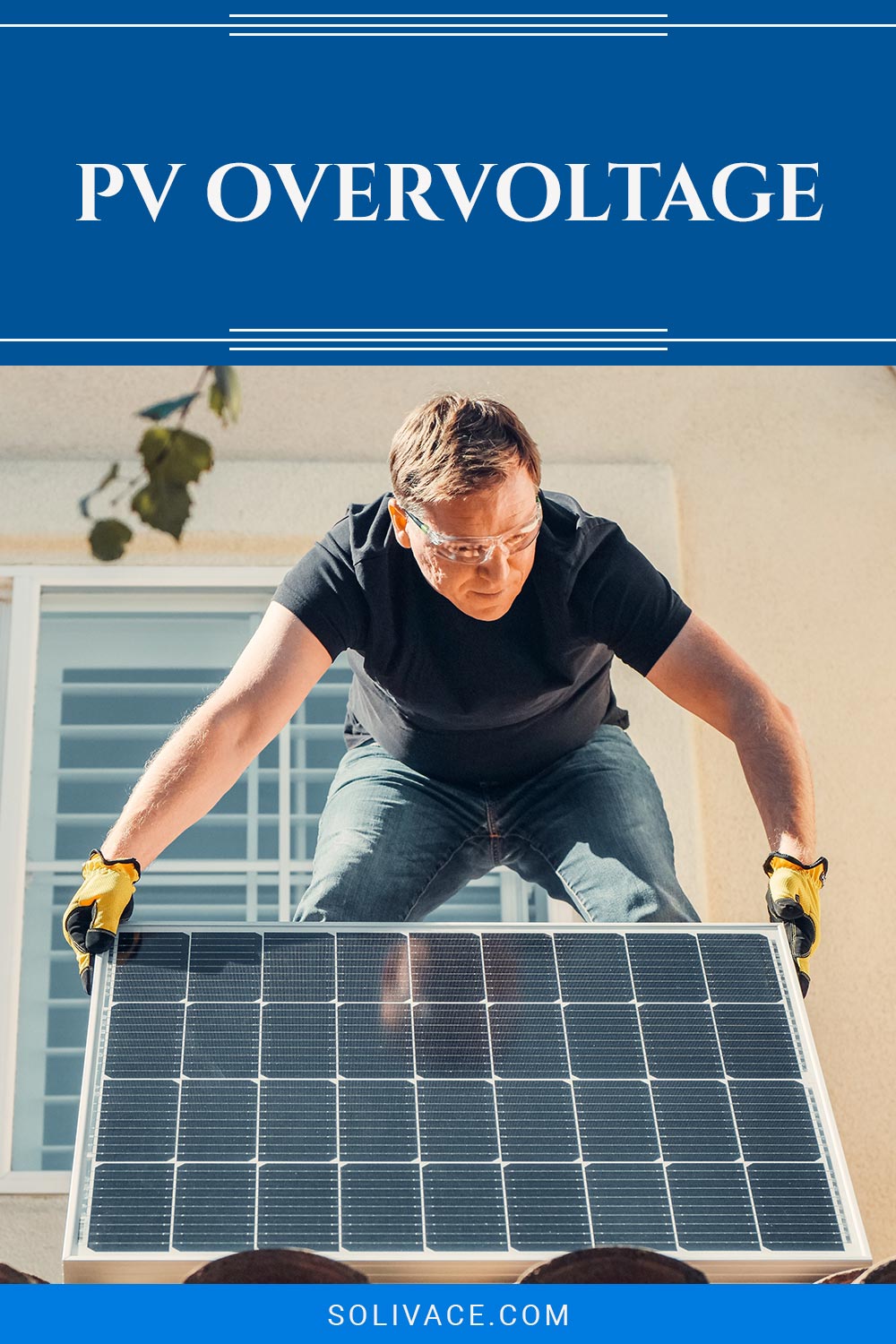Pv Overvoltage
We may earn commissions for purchases made through links on our site. Learn more on our about us page.
Renewable energy sources are on the rise around the world, and we are only just learning about some of the unique challenges they provide in recent years.
Many people like the idea of solar power because it has a relatively low visual impact, and any excess energy can be sold off back to the national grid. People don’t realize the work that must be done to push electricity into the national grid from a local system.
Continue reading to learn more about what this solar inverter problem is, how it occurs, and how to prevent issues in your system.

What is PV Overvoltage?
Photovoltaic (PV) overvoltage is a common issue that solar companies often get questions and complaints about, but it is not something you may encounter all the time, depending on where you live.
PV overvoltage is when the amount of electricity your solar panels generate is higher than the demand for that electricity in a house or given area. This is what many people want because they want to sell their excess back to the grid.
Unfortunately, to push energy back into the grid, the solar inverter must increase the voltage slightly. As more inverters in a given area attempt to push their excess electricity back to the grid, they compete with each other and end up increasing the voltage each time.
Eventually, if the inverters reach an average voltage above 255V for ten consecutive minutes, regulations require inverters and entire solar systems to shut off to prevent issues. But, of course, the same is done immediately if inverters happen to reach 260V.
How Does PV Overvoltage Happen?
There are a few reasons why a PV overvoltage might occur, but the most common happens to be the weather.
When it is relatively cool and there is enough sunlight, solar panels operate at maximum efficiency, which is when they go beyond supplying immediate energy demands.
A PV overvoltage may not occur as often for you as for other people depending on your system and the surrounding area.
If your system includes batteries that store excess electricity, it will probably prioritize charging those batteries instead of pushing the excess back to a grid.
You could still experience a PV overvoltage even with batteries if the batteries become fully charged, though.
If your surrounding neighborhood or the larger area has many solar systems and inverters, you may encounter overvoltage issues more than those in areas without so many inverters. This is because there will be more competition to push electricity back to the grid.
When is PV Overvoltage Most Likely To Happen?
The occurrence of PV overvoltage is not distributed evenly across the world or throughout the year.
Instead, PV overvoltage are most likely to occur during the spring and fall when there is plenty of sun but cool air temperatures to keep solar panels running at maximum efficiency.
Because solar panels need to be running at or close to their maximum efficiency for an overvoltage to occur, the early morning is the time of day most likely to suffer from this issue.
This is because there can be enough sun to generate electricity without heating the solar panels and the cool air surrounding the panels. There is also less demand for electricity at this time because many people are asleep.
How Can You Avoid PV Overvoltage?
There are short-term solutions and long-term solutions to avoid experiencing PV overvoltage.
For the short term, you can simply increase your energy demand during times when PV overvoltage typically occur. This is easy to do if your appliances can be scheduled.
Sources of major energy consumption to help you prevent PV overvoltage include turning on:
- Air conditioners or heaters
- Fridge/freezers
- Swimming pool pumps
- Some power tools
Long-term solutions involve introducing batteries to your system if you don’t already have them. These batteries are great at keeping the essentials on in your house if there is ever a power outage in your area.
They can also be your only source of power at night in remote situations. As technology advances, we may see solutions to PV overvoltages being included in the hardware of new inverters and charge controllers.
What Should You Do if PV Overvoltage Happens?
If you’re not very technically knowledgeable about your solar system, there isn’t much you can do when an overvoltage occurs, and that’s okay.
You can contact your solar installer, who can increase the voltage threshold your inverter will handle before shutting off due to overvoltage. This is usually a temporary fix; you may still experience solar systems shutting off or having reduced output.
Contacting your Distributed Network Service Provider (DSNP) is also possible. They can regulate the voltage at your local transformer, but it will take longer to get results.
You may have to ride out the inconvenience for most people until your inverter can safely be turned back on. Unfortunately, this isn’t ideal because whenever your inverter shuts off because of an overvoltage, it can cause a surge and damage your appliances.
Simply routing your sensitive electronics through a surge protector should help with this issue.
Final Thoughts on PV Overvoltage
PV overvoltage is becoming more and more of an issue as people turn to solar panels and inverters for their energy needs. The competition to sell energy back to the grid causes these overvoltage and causes inverters to shut off because of safety regulations.
You can experience reduced output from certain solar systems or complete shutdowns when this happens. Preventing this may involve installing batteries in your solar system and simply waiting for technology to progress to the point it is no longer an issue.



Leave a Reply
You must be logged in to post a comment.